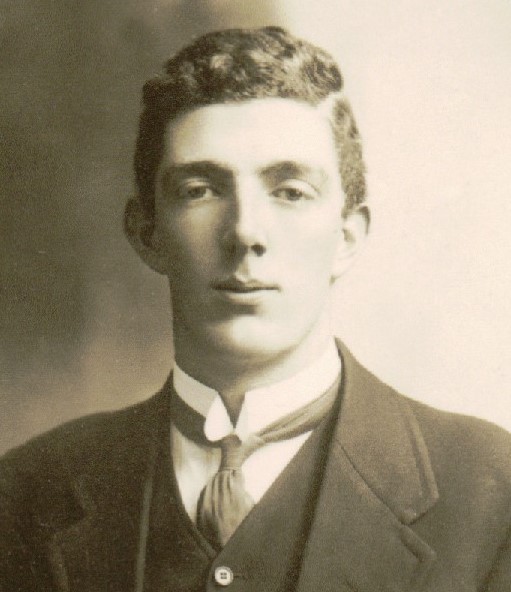Albert Shillabeer
Name: Albert Arthur Shillabeer

Rank: Private
Service Number: 1731
Units: 48th Battalion 1st AIF
Personal Life: Albert Arthur Shillabeer was born on 20th May, 1894, at One Tree Hill. His parents were Andrew and Elizabeth (nee Foote), and he was the 7th of nine children. He attended the Precolumb School at One Tree Hill, a small school on a parcel of land that was part of a farm known by the same name and donated by the farmer John Sampson, so that his and other local children could get an education. After finishing school, he worked as an engineer’s assistant, completing a 4 year apprenticeship, although he described his calling as an engine driver on his enlistment papers. From an article published after his death he was employed at the Chemical Works in Port Adelaide when he enlisted.
Enlistment Details: Albert enlisted on the 6th March 1916 at the age of 21 years and 10 months. He was 6 foot 3 inches tall, (191cm), which was well above average for the time and weighed 156 pounds, (71kgs). He had a fair complexion with blue eyes and brown hair and was a member of the Church of England. He was assigned to the 2nd reinforcement of the 48th Battalion.
Service: Albert went into camp on the 20th March 1916 at Mitcham where he trained until the 11th April when he left Adelaide aboard the “SS Aeneas”. After spending a short time in Egypt he boarded the “Franconia” on the 6th June at Alexandria and embarked for Plymouth in England arriving there 10 days later. From here he went to camp at Rollestone in the Salisbury area where he continued to train. During his time there he was twice disciplined, the first time on the 6th August for being absent without leave from QMS fatigues for which he was confined to camp for 4 days and 5 days later, after being warned, was found to be still in bed at 6.10 am. For this infringement he was confined to camp for a further 3 days.
He completed his training in early 1917 and on the 4th February he boarded the “SS Victoria” in Folkestone, bound for France. He arrived at Etaples that day and was marched out to join his unit on the 9th. He was Taken on Strength by the 48th Battalion on the 10th February. At this time the battalion was training behind the lines at Albury Camp. The following day they moved to Townsville Camp, and a few days later moved into the front line at Bulls Trench just north of Guedecourt. It was in this area that Albert first experienced the reality of battle as the battalion moved into and out of the front line during February. This was the end of the coldest winter in many years and as the days got slightly warmer the snow melted causing huge problems with mud which impeded progress.
Later in the month Albert’s battalion was involved in capturing a section of Pork Trench. On February 25th the battalion left the front lines and moved back to Henencourt just west of Albert for rest and training in new tactics that the British Army were implementing.
The 48th Battalion continued to train and rest throughout the month of March near Albert. At the end of the month, it started moving forward toward the frontlines. By the 9th of April it was in position in front of Bullecourt. The battalion was ordered to attack the German lines there on the 10th April and by dawn all were lying in wait at the jumping off tapes but as the tanks that were meant to support the attack had not arrived the attack was delayed for 24 hours. The men needed to retire from their positions in “full view of the Boche at close range”. Despite this, casualties were quite low.
The attack went ahead the following day but again the tanks were late and moved slowly across No Man’s Land once they arrived, leading to the attack being delayed by a few hours. This caused a lack of coordination with the artillery but still the 48th Battalion was able to penetrate through to the German 2nd line. Due to the poor communication and confused reports, artillery support was lacking and despite desperate fighting the position could not be held against German counterattacks and the battalion had to fall back to its original lines with heavy casualties. Albert was a signaller and was in the 2nd German line when he was shot by a sniper through the forehead and killed instantly, according to eyewitness statements. He was one of 435 casualties suffered by the battalion that day.
The battalion retired to its original line, leaving the wounded and dead in the German trenches. Albert’s body was not recovered after the war, and he has no known grave. Albert was 22 years old, and he is commemorated on the wall of the Australian National Memorial at Villers-Bretonneux.